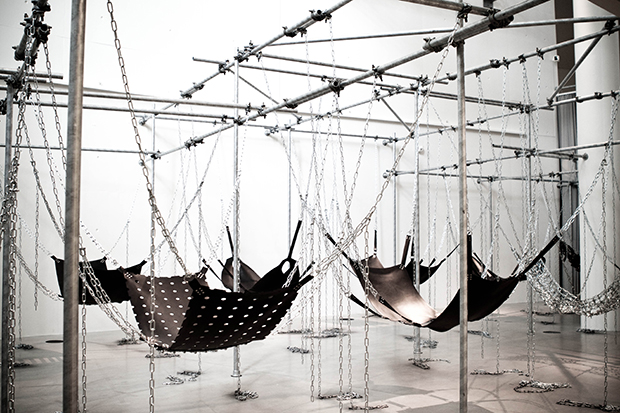
Monica Bonvicini on sexing up Minimalism
How the Italian artist finds fetishism everywhere - from building sites to Carl Andre works
As we explained last week, Monica Bonvicini is an artist who drew her early inspirations from S&M clubs and Marxist theories, and who combines a highly calibrated sense of art history with an equally refined take on gender studies, sex and fetishism.
It's interesting work, and an area you might like to explore in greater detail. What, for example have Mies van der Rohe and Hugh Hefner got in common? In Bonvicini's work, it’s clearly sex.
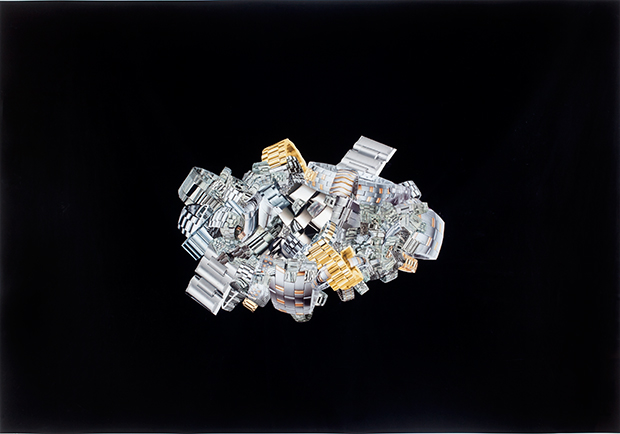
“The 2002 collage Untitled (Rolex) evokes the world of Playboy glamour and modernity,” says Professor of Philosophy and Aesthetics Juliane Rebentisch in our new Monica Bonvicini monograph. “During the early 1960s, a time when American post-war propaganda was attesting to the merits of the suburban single-family home, Hugh Hefner’s Playboy promoted to its readers an alternative lifestyle in which the international style of modernist design went hand-in-hand with a sexual political project: the attempted liberation of men from their assigned role as family breadwinner.”
This seems like a big jump to make, yet, it's these underlying drives that interest Bonvicini. “As far as I’m concerned, anything that’s historically defined and labelled as deviant, or manifesting some sort of sickness, is worth trusting,” the artist says in our new book’s interview section.
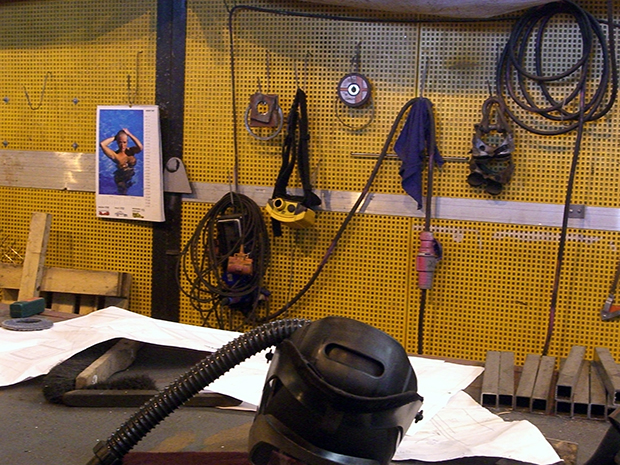
Her appropriation of Carl Andre-style works in her 1999 sculpture Bedtimesquare, was, she explains, an attempt “to sex up the geometric forms used in Minimalism.” The artist says, “I have always found Minimalist artworks to be missing the sweat, the odours and liquids of the human body.”
Similarly, her fetish-like sculptures, such as Identify Protection, employ common, industrial materials, taking the deviance out of the sex club, and relating it more readily to the everyday world. “The chains I use are the kinds that are commonly used on construction sites to hoist things up," she says. "Likewise the rubber that I use is industrial liquid rubber, the kind used for automobile tyres. After all, I was thinking about art and architecture as a production of fetish fantasies.”
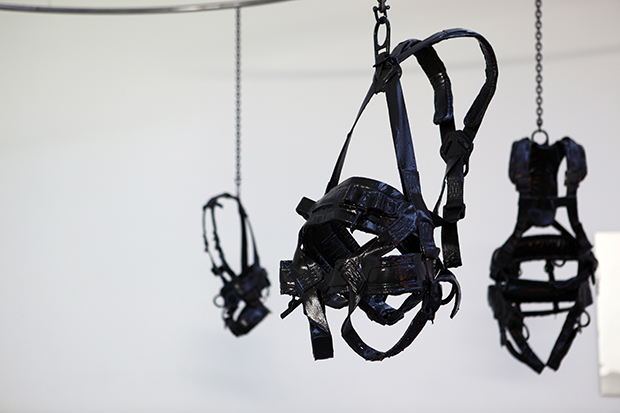
Indeed, in the simple making of buildings, Bonvicini recognizes some of our deeper desires. For the past fifteen years, Bonvicini has been working on What Does Your Wife/Girlfriend Think of Your Rough and Dry Hands? (1999 - ongoing). In this project, the artist circulates questionaires among construction workers, "asking them such provocative (and humorous) questions as ‘Do you think there is anything erotic about building materials or in the process of construction?’ or ‘How do you get along with your gay colleagues?’"
"The latter prompted the reply from one respondent that he did not have ‘ANY’ gay colleagues, but if he did, he would get along with them ‘as long as their gayness does not effect the project’, a stunningly honest, if troubling, admission.”
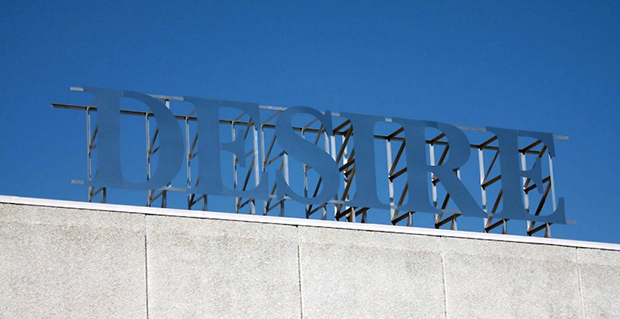
It's a jokey series, but with a serious point. Alongside her documentary photographs of pornography in working environments, Nude in the Workshop (2009), and integration of scaffolding poles and leather love swings in Never Again (2006), her work breaks down the divide between the verboten realm of sado-masochism and the normalised sphere of straight guys with power tools.
As Bonvicini puts "if one really believes that the personal is the political, then the first scene of the crime is the bed." Want to buy a copy of the monograph? Then you'll find it here.